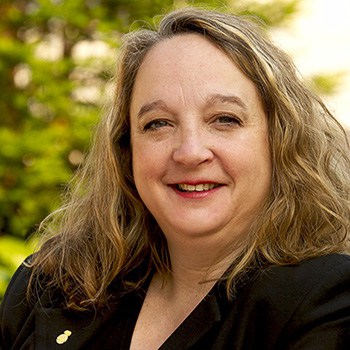As the U.N. Climate Change Conference is happening in Glasgow, our industry is grappling with issues around sustainability.
Sustainability may have taken a back seat to other concerns as meeting shut down during the COVID-19 pandemic — or has it? While some bad habits have crept back in — looking at you, prepackaged dinnerware — the meetings and events industry actually has, albeit in some cases inadvertently, actually taken some giant steps toward reducing its carbon footprint.
Prevue recently caught up with Nancy Zavada, CMP, Founder and President of MeetGreen, a sustainable events agency that is certified as an ISO-20121 and Women-Owned Business. Zavada oversees sustainability initiatives for corporate and non-profit organizations and has authored three books on sustainable events. Here is her take on sustainability in events as of the fall of 2021.
Prevue: With so much of everyone’s focus on surviving COVID, personally and with their meetings and events, have we back-burnered sustainability in events?

Zavada: Let’s start by talking about the carbon elephant in the room — air travel. That’s what accounts for 75% to 80% of a meeting’s carbon footprint. That elephant has been romping around the room for years but no one wanted to talk about it. With meetings going virtual during the pandemic, there have been huge reductions just due to eliminating air travel. Now groups are taking a hard look at the effect of air travel on their events’ carbon footprint. Some of the academic groups we work with think that virtual meetings are just fine for their purposes, and many think they may not go back to in-person meetings at all, or if they do, in a much more limited way. Our large corporate clients also are assessing their carbon footprints and the role meetings play.
Some organizations that are going back to in-person meetings are holding smaller, regional events, which also cuts down on air travel.
On the other end of the spectrum we have what can only be called security theater — if we wrap everything in cellophane, we’re going to be OK even though COVID does not appear to spread easily through touch. And is cellophane-wrapped silverware any safer than traditional silverware anyway? Someone still has to touch it to unpack the boxes, so I don’t see how that’s any safer than reusable silverware that’s been washed at a high temperature.
The same question could be asked of going back to individual water bottles. Who knows how many people have touched that bottle before it gets to me, and I have no way to clean the outside of the bottle. How is that safer than bringing your own refillable bottle and filling it under a dispenser?
Prevue: Have you seen any green event innovations come out of our pandemic experience?
Zavada: In a word: Hybrid. I’m serious about that. Having a way for people to meet without traveling is a huge innovation for sustainability in events. Plus offering a hybrid option makes the meeting more accessible and inclusive for those with disabilities and those hindered by socio-economic factors, and for those who are still taking care of children and elders and can’t travel. It’s not going to be either/or in the future when it comes to in-person and online events. It’s going to be “and.”
Prevue: But it can be expensive and time-consuming to plan and produce two parallel events, one for the in-person audience and one for a remote audience.
Zavada: You don’t have to do everything. The key is to allow the virtual audience to participate, to ask questions of the speaker and participate in polling so their voices are heard. If you give the virtual audience 15 minutes with the keynote speaker after the presentation, that is hugely powerful without having to stream every breakout session.
We don’t have to flip back to what we were doing before the pandemic. Let’s flip forward and figure out ways to future-proof our meetings by finding ways to build the program so you don’t have to pivot between in-person and virtual, but rather can just scale each aspect up or down as needed.
Prevue: What do you predict we’ll see in terms of green meeting practices once in-person meetings and events start to normalize?
Zavada: Organizations, especially large corporations, are starting to track the carbon impact of the food and beverage they serve at events.
Prevue: But isn’t that difficult to pin down?
Zavada: It can be, which is why we’re working on developing a free calculator to help plan menus. But it really is just about the choices you make. For example, if you just make one meal a nice and hearty plant-based dish, the carbon savings are tremendous. One of our corporate clients that holds big, 60,000-person events has substituting one meat-based meal for a plant-based meal on its list of 10 things it can do to be more sustainable. Just that one decision can make a big difference. You could even keep the meat protein, just in smaller proportions, so that the meat is more of a condiment than a main dish.
Likewise, the carbon impact of tea is much less than that of coffee. It’s about making lower carbon choices when it comes to food. Your venue’s chef can help you find ways to do that, especially when it comes to locally available food. The food piece is key since we all travel on our stomachs!
Prevue: What else can meeting professionals do now to make their in-person, hybrid and/or fully digital meetings more sustainable?
Zavada: There are lots of other easy ways to reduce an event’s carbon footprint, such as not providing bottled water and using electronic or reusable signage — we include many ways to do this in this infographic.
Prevue: So has the pandemic really back-burnered sustainability or is that a false premise?
Zavada: I think it made people even more aware of the carbon footprint of their events. It made people more aware about how delicate our planet really is, how interconnected we all are, and how some things that we used to do without thinking about don’t seem quite as necessary. Such as air travel. I’m not against air travel by any stretch of the imagination. But I am against travel for travel’s sake. So many more individuals and organizations are rethinking where and how they travel and eliminating travel that’s now easy to see is non-essential.
Let’s not waste this moment in time by thinking about how we can go back to what we were doing pre-pandemic. We can instead move forward into a better, more sustainable, more human-friendly way of doing business — including at meetings.
You Might Also Be Interested In
Marriott International Commits to Net-Zero












